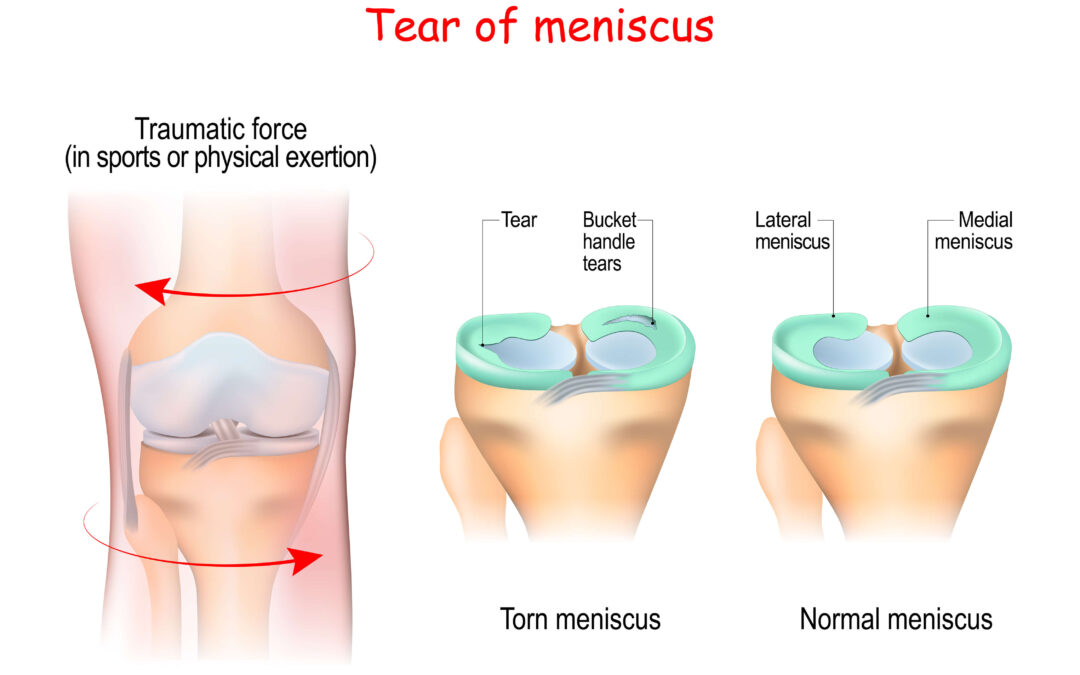The meniscus is a rubbery shock-absorbing cartilage that sits on top of the tibia, or shin bone, and helps cushion forces that pass to the femur, or thigh bone. The medial meniscus is positioned on the inner side of the knee and the lateral meniscus is on the outer side of the knee. Each meniscus is subject to significant pressure as the knee twists or bends. If the pressure exceeds the strength of the meniscus, the tissue can tear. Unfortunately, once the meniscus is torn, its ability to absorb shock is compromised. The torn portion of the meniscus can also catch or snag inside the knee, causing pain, swelling, a sense of clicking or popping, or instability.
A torn meniscus is usually diagnosed by an MRI, which is obtained if an x-ray does not identify the source of a patient’s knee pain. There are 2 common scenarios in which a meniscus tears.
- The 1st is a normal, healthy meniscus that is put under severe stress, for example, a twisting injury while playing sports. These traumatic types of tears may often be recommended for surgery in an attempt to repair the torn meniscus or simply trim back the torn portion so that it no longer catches.
- The 2nd type of meniscus tear is considered degenerative, rather than traumatic. As the meniscus ages, it loses some of its water content and can be prone to separation of its fibers in a degenerative manner. Most people who have osteoarthritis of the knee have meniscal tearing as a component of the degeneration of the knee. Typically, degenerative tears are managed conservatively without surgery with activity modification, anti-inflammatory medications, physical therapy exercises, and possibly injections.
With either type of tear, if a piece of the meniscus becomes stuck inside the knee, the knee can become “locked”, which might also require surgery. Fortunately, meniscal surgeries are usually arthroscopic, involving use of a camera through minimally-invasive, small incisions. The patient is typically allowed to walk on the knee immediately after surgery, and in many cases can get back to full activities within a month.
If you have sustained a new injury to your knee, or find that your knee is causing you pain, limping, or a sense of catching or locking, we recommend you be evaluated by an orthopedic practitioner. Our office can provide same or next day appointments for such injuries so that you can have a timely evaluation and treatment plan.

Andrea L. Bowers, MD
Dr. Bowers believes that patient comfort and education is paramount. She strives to guide her patients mentally, emotionally and physically to overcome pain and restore function and quality of life.
